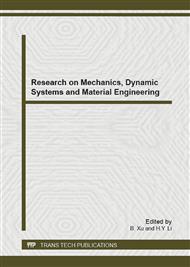p.277
p.280
p.287
p.291
p.297
p.301
p.304
p.308
p.312
Treatment Effect of Coking Wastewater Using Three-Phase Biological Fluid-Bed with New Ultrastructure Biological Carriers Based on Properties of Biological Materials
Abstract:
The degradation of COD and ammonia nitrogen (NH3-N) in coking wastewater was researched using the new ultrastructure biological carriers in three-phase aerobic biological fluid-bed. The results show that the optimum conditions of the new biological carriers are as follows: HRT of 20 h, neutrality skew alkaline pH (about 7.5) and dissolved oxygen (DO) of 2~5mg/L. Under the optimum conditions, the removal efficiency of COD and NH3-N can reach 82% and 87%, respectively, when the influent concentration of COD and NH3-N is about 3000 mg/L and 60mg/L. At the same time, comparison with the activated sludge process and common biological ceramisite carriers, it is found that the most excellent treatment effect and the strongest resistance to impact are obtained under the condition of the shortest HRT in this new ultrastructure biological carriers reactor, and the effluent of two-stage reactors in series can reach the first national discharge standard, which will has a wide application prospect.
Info:
Periodical:
Pages:
297-300
Citation:
Online since:
December 2012
Authors:
Price:
Сopyright:
© 2013 Trans Tech Publications Ltd. All Rights Reserved
Share:
Citation:


